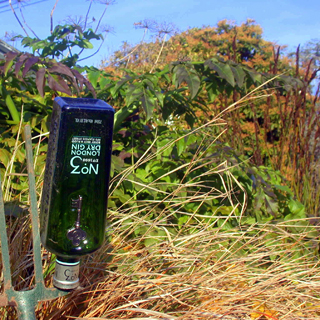 Well-deserved holidays are rightly in the forefront of all your minds at present, so we will keep it short this month, rather than burdening your consciences with gardening jobs. In truth, there is nothing truly urgent to do now, so enjoy your breaks, and just dabble a bit in the garden in between going to the beach, sailing, walking, eating seafood, applying the after-sun and all those Cornish pleasures which beckon to us at this time of year.
Well-deserved holidays are rightly in the forefront of all your minds at present, so we will keep it short this month, rather than burdening your consciences with gardening jobs. In truth, there is nothing truly urgent to do now, so enjoy your breaks, and just dabble a bit in the garden in between going to the beach, sailing, walking, eating seafood, applying the after-sun and all those Cornish pleasures which beckon to us at this time of year.
There is no harm though, in pondering how to extend the flowering season in your garden into late summer and early autumn as you wander around with that G&T in your hand, and there are some very easy ways to do that.
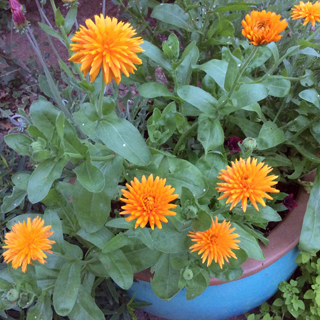 Firstly, keep deadheading. G&T in one hand, scissors or secateurs in the other, half an hour each evening, and you will be rewarded with more blooms and for longer. The principle is simple. Plants live to reproduce, and by taking off the fading flowers before seed can be formed, you are delaying that reproduction process. This applies to all manner of your plants: roses, sweet peas, dahlias, cosmos, penstemon and so on. Some though, you want to let seed if you’d like to increase your stock of them.
Firstly, keep deadheading. G&T in one hand, scissors or secateurs in the other, half an hour each evening, and you will be rewarded with more blooms and for longer. The principle is simple. Plants live to reproduce, and by taking off the fading flowers before seed can be formed, you are delaying that reproduction process. This applies to all manner of your plants: roses, sweet peas, dahlias, cosmos, penstemon and so on. Some though, you want to let seed if you’d like to increase your stock of them.
Alliums, for example, will only ever have one flush of bloom, so when it’s gone, it’s gone. However, if you want more alliums over the next few years, leave the fading seed heads, let them fall and you will have some free new plants before long. The same applies for many annuals such as nigella, calendula and nasturtiums, cerinthe and poppies. In their case, you may want to pull out some of the fading plants, as they are vigorous in our climate, and you have more than you want, and probably in places where you don’t want them, if you leave them all to seed.
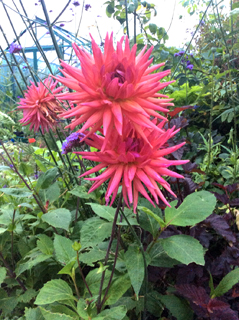 Secondly, there are a number of plants which are only now coming into their full glory, and will keep on flowering for you until October, and November in some cases. The garden centres are choc full of them, so go and pick up some instant colour.
Secondly, there are a number of plants which are only now coming into their full glory, and will keep on flowering for you until October, and November in some cases. The garden centres are choc full of them, so go and pick up some instant colour.
Dahlias are glorious and come in every conceivable colour and shape (look out for a Honka – totally bonkers!) and salvias are appearing in all sorts of colours – purples, blues, hot pinks, vibrant reds, and even soft colours such as cream.
Salvias need a good sunny spot, with free-draining soil, slightly on the dry side if possible. They are perennials, but will need that good drainage to help them survive over the winter. And if frost threatens, cover them up – they are easily lost to it. You might even want to keep them in a pot, and pop them into the border one, and take some cuttings before winter just in case. They propagate from cuttings really easily.
Phlox is also coming into flower at the moment, and although it maybe doesn’t flower for so long, will give you a lovely display while it does, not to mention a lovely background scent.
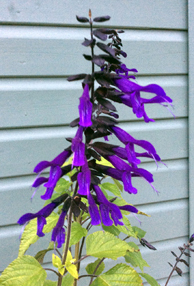 They are one of those flowers that are best sniffed on the air, rather than plunging your nose into them – they smell, well, a bit planty up close, but a much more fragrant when borne on a breeze. Phlox will take a little bit of shade too, which is helpful because we all have those spots. They are mainly the in the blues, whites and pinks ranges, with some multi-coloured ones available. The white is a really crisp addition to the border and looks great in fading light – luminous almost.
They are one of those flowers that are best sniffed on the air, rather than plunging your nose into them – they smell, well, a bit planty up close, but a much more fragrant when borne on a breeze. Phlox will take a little bit of shade too, which is helpful because we all have those spots. They are mainly the in the blues, whites and pinks ranges, with some multi-coloured ones available. The white is a really crisp addition to the border and looks great in fading light – luminous almost.
Japanese anemones are also coming into bloom, but be careful where you put them. Lovely flowers, but they need strict control if you don’t want them to run riot. Their roots spread and send up new plants all over the shop, so you could sink a pot into the ground to contain them. Again, more pastel colours, white, pinks of various shades, and maybe a hint of blue with white here and there.
If hot colours are your thing, you can do a lot worse than heleniums and rudbeckia – the latter coming out now, the latter not quite, but both leave behind a lovely cone once the petals have faded, which is structurally very pleasing, and is great for flower-arranging.
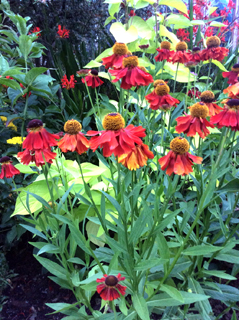 On the vegetable front, keeping sowing your lettuce and herbs to give yourself a fresh crop. And keep eating all those lovely veg coming through. Particularly with peas and beans, the same applies as it does with flowers – if you let the seed (ie the peas and the beans) mature, the plants will stop producing.
On the vegetable front, keeping sowing your lettuce and herbs to give yourself a fresh crop. And keep eating all those lovely veg coming through. Particularly with peas and beans, the same applies as it does with flowers – if you let the seed (ie the peas and the beans) mature, the plants will stop producing.
Some plants will also need regular feeding – we are sure you all know about tomatoes and cucumbers, but don’t forget to feed your courgettes and squash – they are very hungry plants and will produce all the more if you feed with potassium-rich feed once the fruit is setting. Winter veg plants will be appearing in the shops soon, so clear a bit of space and get ready to plant some of those lovely cabbages, purple sprouting broccoli and oh-so-trendy kale for your smoothies. Yuk.
That’s all from us this month – enjoy your holibobs, as it seems to be these days, and come back refreshed and galvanised for some more weighty work out there in September
Sarah Daniel and Helen Robins, Pengelly Garden Centre

